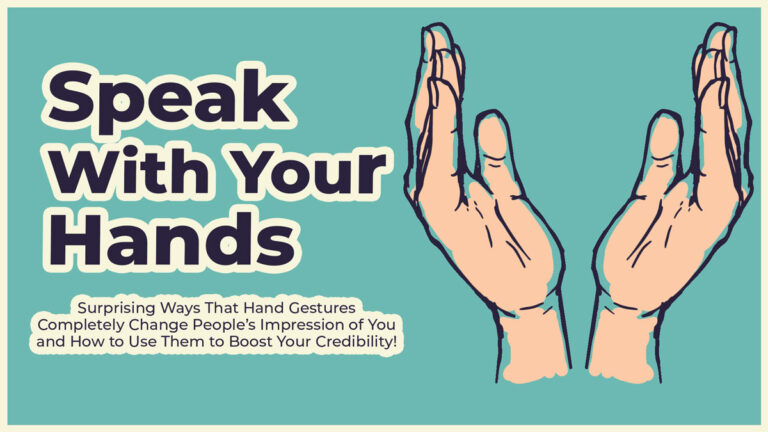Creating an engaging and impactful presentation is as much about the content you deliver as it is about how you deliver it.
However, even the most seasoned speakers can inadvertently display signs of nervousness or lack of confidence, which can lessen the power of their message.
Recognizing these signals is the first step towards addressing them and improving your presentation skills.
In this blog, we’ll explore the top 7 signals that might reveal your lack of confidence during a presentation and offer tips on how to overcome them.
1. Avoiding Eye Contact
Eye contact is a powerful tool in communication. It helps to establish a connection with your audience, conveying confidence and sincerity.
When a presenter avoids eye contact, it can suggest discomfort or a lack of belief in what they’re saying.
To avoid this, practice making eye contact with different people throughout the audience, aiming to hold each gaze for a few seconds before moving on.
This not only helps in engaging your audience but also in calming your nerves, as you’ll start to see individual faces rather than a daunting crowd.

2. Fidgeting and Unnecessary Movements
Nervous energy often manifests in physical behaviours such as fidgeting, pacing, or touching your face or hair.
These actions can be distracting and convey a lack of self-assurance.
To minimise this, practice standing still with your feet shoulder-width apart, which is a stable and confident stance.
Use purposeful gestures to emphasize points rather than random, nervous movements.
Recording yourself during a practice session can be eye-opening, helping you become more aware of your movements and allowing you to adjust them.

3. Projecting Monotone Voice
A monotone delivery lacks inflexion and fails to convey enthusiasm about the topic, making it challenging for the audience to remain engaged.
Varying your pitch, pace, and volume can help maintain interest and demonstrate confidence in your message.
Practice emphasizing key points with a change in tone or a slight pause, which can make your presentation more dynamic and engaging.
Reading aloud and recording your voice can also provide insights into areas where you can improve your vocal delivery.

4. Speaking Too Quickly
Speed talking can be overwhelming for listeners, making it hard for them to process information. It often stems from nervousness or a desire to finish quickly.
To slow down, practice breathing techniques and deliberately pause between sentences or key points.
This not only helps in pacing your presentation but also gives your audience time to absorb the information.
Timing your segments during rehearsals can ensure you’re allocating enough time to each part without rushing.

5. Excessively Using Filler Words
The overuse of filler words can disrupt the flow and clarity of your presentation, making your message seem less polished.
These verbal crutches often surface when we’re trying to think of what to say next.
Being well-prepared and practising your presentation multiple times can reduce reliance on these words.
Additionally, becoming comfortable with pauses can help; silence can be powerful for emphasis and gives you a moment to gather your thoughts.

6. Standing with Poor Posture
Your posture communicates a lot about your confidence level.
Slouching, for instance, can make you appear less confident and less authoritative.
Conversely, standing up straight with your shoulders back and your head held high projects confidence and makes you feel more powerful.
Practice your presentation in this posture, even if it feels unnatural at first.
Over time, it will become more comfortable and significantly impact your presence.

7. Dodging Questions
Dodging questions or giving vague answers can suggest you’re not fully confident in your knowledge or preparedness.
To counter this, prepare by anticipating potential questions and practising your responses.
This preparation not only helps in providing concise and thoughtful answers but also boosts your confidence, knowing you’re ready for any questions.
Encouraging questions and engaging with your audience also demonstrates your expertise and confidence in handling the topic at hand.

Practice Until You Can Confidently Overcome These Mistakes
Improving in these areas requires mindfulness and practice.
By addressing each signal individually and working on the suggested strategies, you’ll gradually notice an improvement in your presentation skills and a boost in your confidence.
Remember, confidence is not about perfection but about effectively managing and overcoming the natural nervousness that comes with public speaking.


